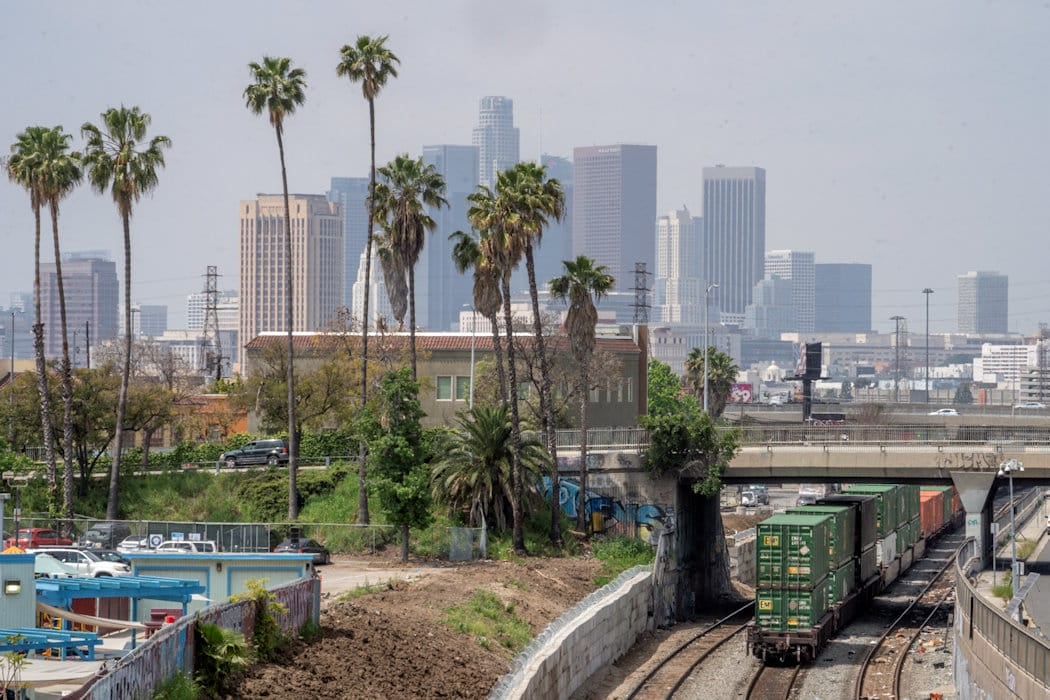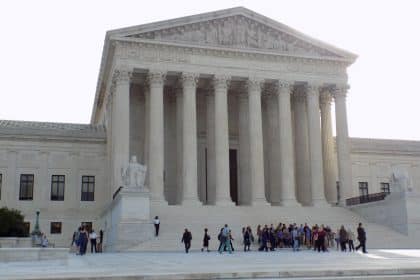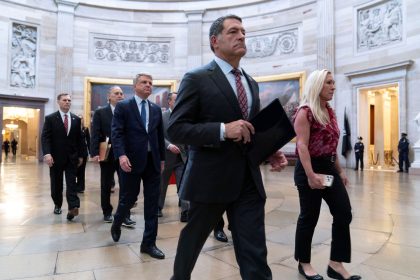California Passes 1st-in-Nation Emission Rules for Trains

SACRAMENTO, Calif. (AP) — California approved Thursday a first-in-the-nation, ambitious rule limiting rail pollution to aggressively cut greenhouse gas emissions in the state’s latest move to establish itself as a global leader in the fight against climate change.
The rule will ban locomotive engines more than 23 years old by 2030 and increase the use of zero-emissions technology to transport freight from ports and throughout railyards. It would also ban locomotives in the state from idling longer than 30 minutes if they are equipped with an automatic shutoff.
“It is time to kickstart the next step of transformation, with trains,” said Davina Hurt, a California Air Resources Board member.
The standards would also reduce chemicals that contribute to smog. They could improve air quality near railyards and ports.
But some say it’s too soon for the locomotive standards. Wayne Winegarden, a Pacific Research Institute senior fellow, said the rule would be expensive for rail companies, and increased costs will mean higher prices for many goods that move by rail.
The Association of American Railroads said in a statement “there is no clear path to zero emissions locomotives.”
“Mandating that result ignores the complexity and interconnected nature of railroad operations and the reality of where zero emission locomotive technology and the supporting infrastructure stand,” the group wrote.
Freight railways are an efficient means to transport the roughly 1.6 billion tons of goods nationwide across nearly 140,000 miles (225,308 kilometers), much cleaner than if those goods were trucked, it said.
The transportation sector contributed the largest share of greenhouse gas emissions nationwide in 2020, according to the Environmental Protection Agency. But rail only accounts for about 2% of those emissions.
Kristen South, a Union Pacific spokesperson, said in a statement the rail company is “deeply disappointed” by the vote, adding that the rule is too ambitious for the current technology and infrastructure.
Union Pacific is working to cut greenhouse gas emissions in part by spending $1 billion to modernize locomotives and testing out engines powered by electric batteries, South wrote.
Cecilia Garibay, a project coordinator with the 50-member Moving Forward Network based at Occidental College, said California needs “the strongest, most protective in-use locomotive regulation” that sets an example for the nation.
The standards would need approval from the Biden administration to move forward. They follow rules approved by the EPA to cut emissions from heavy trucks.
Locomotives pull rail cars filled with food, lumber, oil and other products through railyards near neighborhoods in Oakland, Commerce, San Bernardino and other California cities.
They run on diesel, a more powerful fuel than gasoline, producing greenhouse gases and pollution that is harmful for nearby residents.
Other states can sign on to try to adopt the California rule if it gets the OK from the Biden administration.
The rule is the most ambitious of its kind in the country.
“The locomotive rule has the power to change the course of history for Californians who have suffered from train pollution for far too long, and it is my hope that our federal regulators follow California’s lead,” said Yasmine Agelidis, a lawyer with environmental nonprofit Earthjustice, in a statement.
Diesel exhaust is a health hazard. According to California regulators, diesel emissions are responsible for some 70% of Californians’ cancer risk from toxic air pollution. The rule would curb emissions on a class of engines that annually release more than 640 tons of tiny pollutants that can enter deep into a person’s lungs and worsen asthma, and release nearly 30,000 tons of smog-forming emissions known as nitrogen oxides. The rule would also drastically cut greenhouse gas emissions from locomotives, by an amount akin to removing all heavy-duty trucks from the state by 2030.
It’s important to tackle emissions from a sector that often burdens low-income residents and communities of color, and that has plans to expand passenger rail, said Air Resources Board Chair Liane M. Randolph.
Rail companies can participate in incentive programs run by the state to ease the cost of transitioning to zero-emissions locomotives, the agency said.
California has already set out to make big emissions cuts in other areas. The state approved a transition to zero-emissions cars and a roadmap to achieve carbon neutrality, meaning it would remove as many carbon emissions as it releases, by 2045. The board is also considering a rule to electrify a group of heavy trucks that transports goods through ports.
For activists and residents who’ve lived in areas affected by heavy rail pollution, the fight for cleaner trains is decades in the making.
Jan Victor Andasan, an activist with East Yard Communities for Environmental Justice, grew up in West Long Beach and now organizes residents there. It’s a neighborhood near the twin ports of Los Angeles and Long Beach that is “surrounded by pollution” from trains, trucks and industry.
“We support rail, but we support rail if they’re doing all their best to mitigate their emissions,” Andasan said.
Residents shared stories Thursday of children who live near railways having to share inhalers to ease asthma symptoms and families taking extreme measures to rid their homes of diesel fumes.
Some activists would like California to go further, for example, to limit locomotive idling to 15 minutes. They are also concerned that increased demand from online shopping is causing more rail traffic that burdens communities.
The EPA recently approved California rules requiring zero-emission trucks, depending on the type, to make up between 40% and 75% of sales by 2035.
Heidi Swillinger lives in a mobile home park in San Pablo, a small city in the San Francisco Bay Area, along the BNSF Railway. She estimates that her home is just 20 feet (6 meters) from the tracks. She said it’s not uncommon for diesel fumes to fill her house, resulting in a “thick, acrid, dirty smell.”
“Nobody wants to live next to a railroad track,” Swillinger said. “You move next to a railroad track because you don’t have other options.”
___
Sophie Austin is a corps member for the Associated Press/Report for America Statehouse News Initiative. Report for America is a nonprofit national service program that places journalists in local newsrooms to report on undercovered issues. Follow Austin on Twitter: @sophieadanna
























